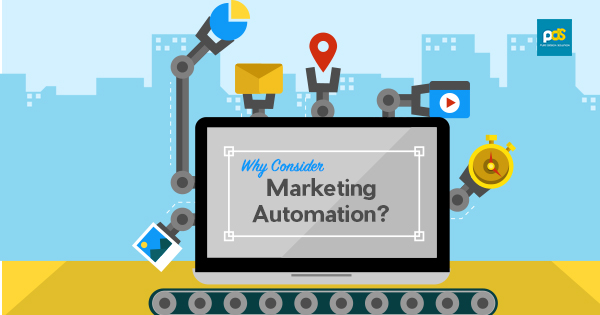Although the idea of automating marketing processes – drip email campaigns, social media posts, blogs, ads – seems very intriguing, navigating this route has also proven confusing for many marketers. Often, digital marketers feel frustrated when the cost of investing in marketing automation software doesn’t pay off; but, they might not be using marketing automation in its fullest, intended form, or they might not have an ecosystem in place that nurtures marketing automation properly.
In order to draw desirable results with your marketing automation efforts, it is recommended to keep the following five factors in mind –
1. You need a system in place to constantly monitor leads coming from your digital activity, across channels. Marketing automation tools can help take your leads through various channels (social media, Website, emails, ads) to eventually take a desirable action-step. However, if you are not tracking lead action, you continue playing guesswork on the most important task of marketing funnel – lead generation.
2. You need to have very clear goals and well-defined course of action you want the ‘lead’ to take. Do you want to offer customers the right content/interactions at the right time to lock-in a sale? Or, do you want them to download something on your Website? Or, do you want them to register for a particular event? Or, do you simply want them to visit your site more frequently? Once you define your goals, you can set up marketing automation tools to help you fulfil those objectives.
3. Research indicates 63% of marketers plan to increase their marketing automation budget – clearly, there is growing curiosity in how marketing automation can prove a blessing for insightful reports, time management, seamless campaigns and collaboration. However, rather than going from one tab to the next to gauge results, it might be more efficient for a business owner to look at a single dashboard every morning to track all results in one place.
4. Constant Contact, Customer.io, HubSpot, AdRoll, Marketo, DialogTech – there are many marketing automation tools available in the market. However, these are all stand-alone tools and not part of one big umbrella group. If you are running a social media campaign, you need to run it through another tool like HootSuite or you need to turn to manual implementation. A centralized access point that controls all SEO, SEM, Blog and Email campaigns should be the final goal of marketing automation.
5. Although marketing automation tools help you deliver personalized, relevant information at the correct time so you can lead users to a desirable end-goal, you first need to have enough information about them on-file from a holistic perspective (their wants/needs, behavioral patterns on different channels at different touch-points, digital footprints). For example, if a customer recently bought a new Smartphone, rather than cross-selling them a backpack, offer them something more relevant like a portable charger or universal adaptor, instead. Automation tools need to allow deep consumer behaviour analysis on the data and actionable insights that assist marketers to make agile decisions.
Although marketing automation seems like the need of the hour, it can either complicate things or simplify them, depending on a case-by-case situation. As you can probably realize from the five pointers above, there is a huge learning curve to get the max ROI from marketing automation tools, and one needs to understand how their customers will behave in response to automated actions triggered by digital marketers. Time versus quality – is it worth it? This is a crucial question to look into. Can marketing automation tools really deliver what they promise? Help us shed light on this important area by taking a moment to fill our survey. You’ll be among the first ones to gain priority access to the results, so you can make a more informed decision about marketing automation tools and technology.

